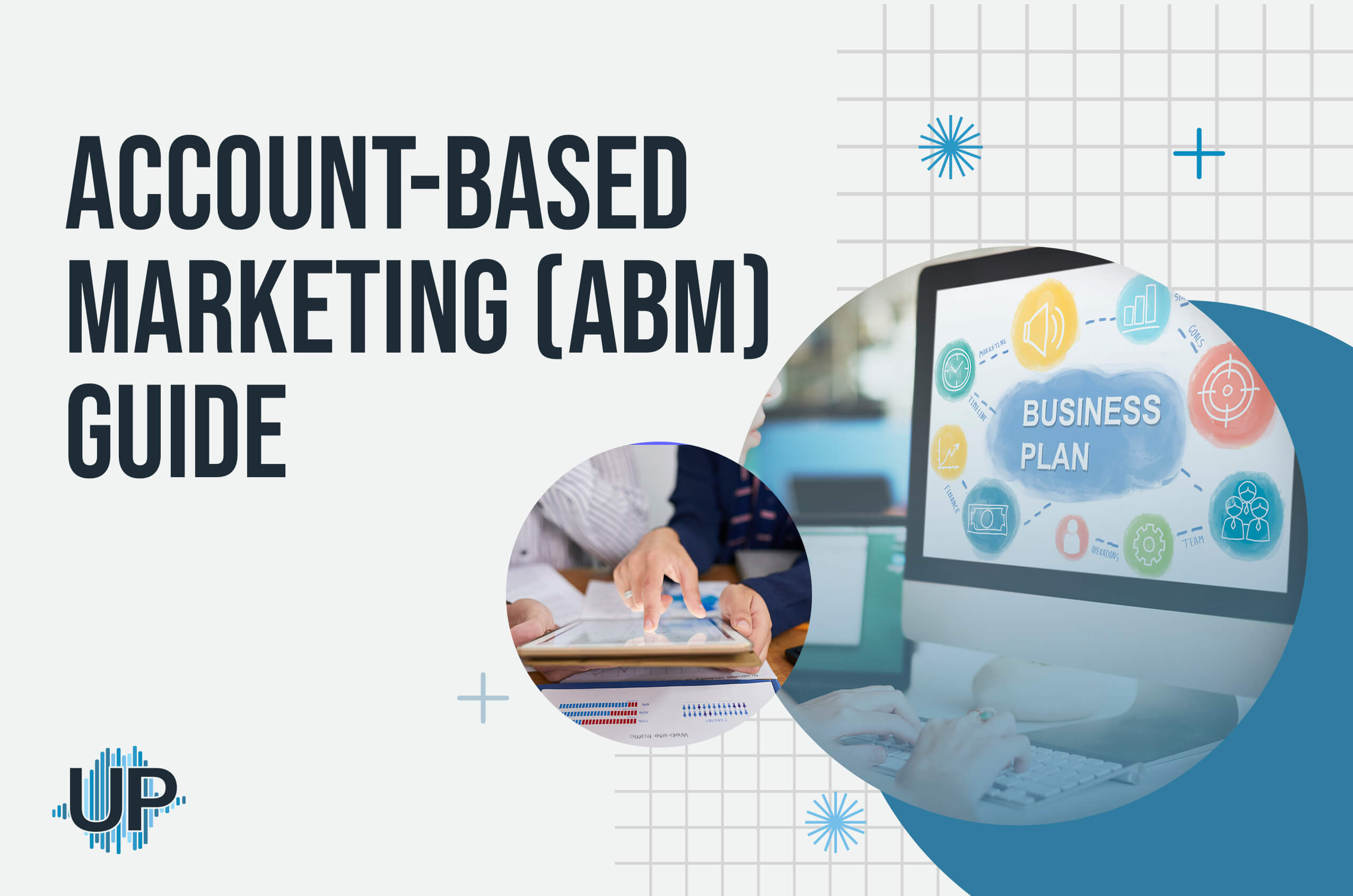
Account-Based Marketing (ABM) has emerged as a cornerstone strategy for aligning sales and marketing efforts towards the most lucrative accounts. But how do you cut through the noise and genuinely engage decision-makers at your target companies? Enter the power of podcasts.
This guide dives into leveraging podcasts as a strategic tool in your ABM arsenal, transforming the way you connect with key accounts, build meaningful relationships, and ultimately, drive unparalleled growth. Let’s explore how podcasts can amplify your ABM strategy, turning listeners into leads and conversations into conversions.
What is Account Based Marketing?
Account-Based Marketing (ABM) is a focused growth strategy where marketing and sales teams collaborate to create personalized buying experiences for a select group of high-value accounts. Instead of casting a wide net with a one-size-fits-all approach, ABM targets specific companies, treating them as individual markets.
This strategic approach involves identifying key stakeholders within these companies and delivering customized marketing messages tailored to their specific needs and pain points.
By aligning resources to engage each account with personalized content, events, and solutions, ABM enables businesses to build stronger connections, accelerate the sales cycle, and increase the efficiency of their marketing efforts, leading to higher conversion rates and a better ROI.
The Benefits of Account-Based Marketing
Account-Based Marketing (ABM) stands out as a strategy that can significantly transform how companies approach their B2B sales and marketing efforts. Its benefits are clear and compelling:
- Increased ROI: ABM is renowned for delivering higher returns than any other marketing approach. By focusing on accounts with the highest potential for revenue, companies can allocate their resources more efficiently, leading to better conversion rates and a greater impact on the bottom line.
- Enhanced Customer Experience: Tailoring your strategy to meet the specific needs and challenges of your target accounts results in a more personalized and satisfying experience for potential clients. This customization strengthens relationships and builds loyalty.
- Aligned Sales and Marketing Efforts: ABM necessitates a high degree of collaboration between sales and marketing teams. This alignment ensures that both teams work towards the same goals, creating a seamless journey for the customer from initial engagement to sale.
- Clearer Metrics: With ABM, the metrics shift from volume to value, focusing on the quality of interactions and engagements with key accounts. This focus allows for more precise measurement of marketing efforts and clearer insights into how these efforts contribute to sales success.
- Streamlined Sales Cycles: Engaging deeply with fewer, more targeted accounts can help to streamline the sales process. By understanding and addressing the specific needs of these accounts, companies can move them through the sales funnel more efficiently.
Account Based Marketing Tools
To execute an effective Account-Based Marketing (ABM) strategy, leveraging the right tools is essential. These tools not only streamline your marketing and sales efforts but also ensure that you can target, engage, and convert your key accounts with precision. Here’s a look at some of the types of ABM tools critical for success:
- Data and Contact Management Platforms: These are foundational for any ABM strategy. Tools like LinkedIn Sales Navigator and ZoomInfo provide the data intelligence needed to identify and understand key accounts and decision-makers.
- Content Personalization and Engagement Tools: To tailor your messaging and content to each account, tools like HubSpot and Marketo allow for customization and automation, ensuring relevant content reaches your target audience at the right time.
- Account-Based Advertising Platforms: Platforms like Demandbase and Terminus enable you to deliver targeted advertising to specific accounts. This ensures that your marketing messages reach the stakeholders at companies you’re aiming to convert, even outside of your owned channels.
- CRM and Sales Enablement: A robust CRM system (like Salesforce) integrated with sales enablement tools (such as Outreach or Salesloft) helps in aligning sales and marketing efforts, ensuring seamless communication and tracking of interactions with each targeted account.
- Analytics and Reporting Tools: To measure the effectiveness of your ABM efforts, analytics tools provide insights into engagement, conversion, and overall impact. Look for platforms that offer account-level reporting to track the success of your strategies.
Choosing the right mix of tools depends on your specific ABM goals, the size and nature of your target accounts, and the resources available to your teams. By integrating these tools into your ABM strategy, you can ensure a cohesive, targeted approach that delivers meaningful results.
Podcasts as an ABM Tool
Account-Based Marketing (ABM), podcasts serve as a dynamic tool for building deeper relationships, establishing trust, and asserting authority in your industry. Their format offers a unique way to engage with key accounts on a personal level while providing valuable content that speaks directly to their needs and interests.
Building Relationship, Trust, and Authority
Podcasts allow you to share your expertise and insights conversationally, making complex topics accessible and engaging.
By featuring industry leaders, including those from target accounts, or discussing challenges relevant to your key accounts, you create a platform for meaningful dialogue.
This approach not only builds relationships but also positions your brand as a thought leader, fostering trust and authority among your target audience.
- Personal Connection: The intimate nature of audio content helps listeners feel a direct connection with the host and guests, fostering a sense of trust and loyalty.
- Expertise Sharing: Regularly covering industry trends, challenges, and solutions helps establish your brand’s authority and credibility.
- Engagement Opportunities: Inviting stakeholders from target accounts to participate in your podcast can deepen relationships and provide them with value, making your company memorable and trusted.
How to Integrate Podcasts into ABM Strategy?
Integrating podcasts into your ABM strategy requires thoughtful planning and execution. Here’s how you can make podcasts a central part of your ABM efforts:
- Identify Key Accounts: Start by selecting accounts that are most likely to benefit from the content you plan to produce.
- Tailor Content: Develop episodes that address specific challenges, trends, and opportunities relevant to your target accounts. This tailored approach ensures that your content resonates with your audience.
- Feature Guests from Target Accounts: Inviting decision-makers and influencers from your target accounts as guests on your podcast not only enriches your content but also strengthens your relationship with those companies.
- Promote Strategically: Use targeted social media ads, email campaigns, and your company’s website to promote your podcast episodes directly to your key accounts.
- Measure and Adjust: Track engagement metrics such as downloads, shares, and mentions by target accounts to gauge the effectiveness of your podcast as an ABM tool. Use this data to refine your approach and content strategy.
By incorporating podcasts into your ABM strategy, you leverage a unique and personal way to communicate with your target accounts, setting your brand apart and fostering deeper connections that can drive growth and success.
Important account-based marketing metrics
To measure the success of your Account-Based Marketing (ABM) efforts, it’s crucial to track specific metrics that align with your strategy’s goals. These metrics help in understanding how well your campaigns are resonating with your target accounts and inform necessary adjustments for optimization. Here are some key ABM metrics to consider:
- Engagement Rate: Measures how actively involved your target accounts are with your content, campaigns, and communication channels. High engagement rates indicate that your content is relevant and impactful to your target accounts.
- Account Coverage: Examines the breadth of engagement within a target account, including how many contacts are interacting with your brand. This metric helps ensure you're reaching all relevant decision-makers and influencers within an account.
- Deal Acceleration: Looks at how ABM efforts impact the speed of the sales cycle. Shorter sales cycles suggest that your targeted approach is effectively nurturing leads and moving them through the pipeline more efficiently.
- Pipeline Contribution: Evaluates the amount of revenue in your pipeline that can be directly attributed to ABM efforts. This metric underscores the effectiveness of ABM in generating valuable opportunities.
- Win Rate: Tracks the percentage of deals closed with targeted accounts compared to the total number of opportunities. A higher win rate indicates a successful alignment of your ABM strategy with the needs and interests of your target accounts.
- Customer Lifetime Value (CLTV): Measures the total value a customer brings to your business over the entirety of their relationship. ABM strategies aimed at fostering long-term relationships should ideally increase CLTV by focusing on high-value accounts likely to offer significant long-term revenue.
- Return on Investment (ROI): Calculates the financial return from ABM initiatives relative to the costs incurred. A positive ROI is a strong indicator of ABM success, demonstrating that the strategy is generating more revenue than the investment required to execute it.
- Customer Satisfaction and Retention: While harder to quantify, customer satisfaction and retention rates are critical for assessing the long-term impact of your ABM strategy on relationship building and account loyalty.
Tracking these metrics provides a comprehensive view of your ABM strategy’s performance, allowing for data-driven decisions to refine and enhance your approach for better alignment with your target accounts' needs and behaviors.
Listen to the Thoughtful Entrepreneur
More Resources from UpMyInfluence:
How to Be An Exceptional Podcast Host


